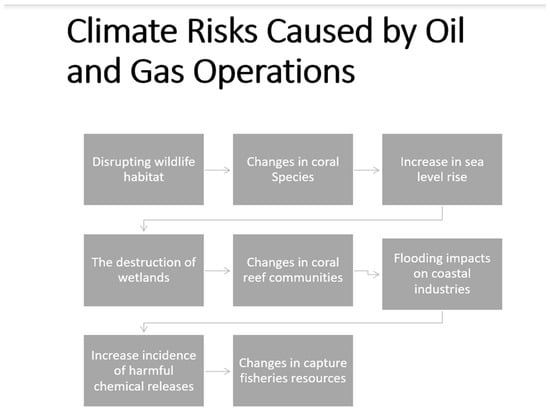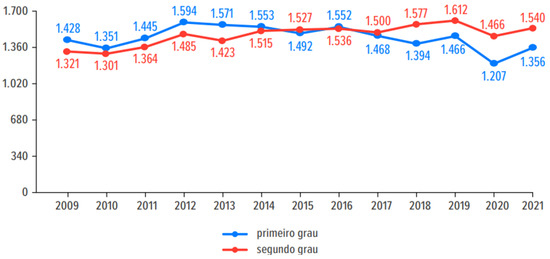Journal Description
Laws
Laws
is an international, peer-reviewed, open access journal on legal systems, theory, and institutions, published bimonthly online by MDPI.
- Open Access— free for readers, with article processing charges (APC) paid by authors or their institutions.
- High Visibility: indexed within Scopus, ESCI (Web of Science), RePEc, vLex Justis, CanLII, Law Journal Library, and other databases.
- Journal Rank: CiteScore - Q2 (Law)
- Rapid Publication: manuscripts are peer-reviewed and a first decision is provided to authors approximately 29.6 days after submission; acceptance to publication is undertaken in 5.6 days (median values for papers published in this journal in the second half of 2023).
- Recognition of Reviewers: reviewers who provide timely, thorough peer-review reports receive vouchers entitling them to a discount on the APC of their next publication in any MDPI journal, in appreciation of the work done.
Impact Factor:
1.2 (2022)
Latest Articles
Influence of the Cultural Defence on Conduct and Culpability in South African Criminal Law
Laws 2024, 13(2), 23; https://0-doi-org.brum.beds.ac.uk/10.3390/laws13020023 - 01 Apr 2024
Abstract
South African criminal law has no separate, distinct, or novel cultural defence. Such a defence could negate or mitigate an accused’s criminal liability for a culturally motivated crime. Whether South Africa’s criminal law could adopt such a defence requires understanding its influence on
[...] Read more.
South African criminal law has no separate, distinct, or novel cultural defence. Such a defence could negate or mitigate an accused’s criminal liability for a culturally motivated crime. Whether South Africa’s criminal law could adopt such a defence requires understanding its influence on the requirements for criminal liability. This article evaluates the influence of the cultural defence on the elements of conduct and culpability. The first part deals with the cultural defence and voluntary conduct. The discussion then turns to culpability, which consists of criminal capacity and fault (mens rea). The third part considers the cultural defence’s influence on criminal capacity, while the fourth considers its influence on fault. More specifically, the article evaluates how the existing types of defence that can negate conduct and culpability in South Africa’s criminal law can accommodate arguments of an accused’s cultural background, values, and beliefs to determine whether there is a gap that only a separate, distinct, or novel cultural defence can fill. The article concludes that South Africa’s principles of conduct and culpability are already flexible enough to accommodate such arguments, obviating the need for introducing a separate, distinct, or novel cultural defence.
Full article
(This article belongs to the Section Criminal Justice Issues)
Open AccessArticle
The Invocation of the Precautionary Principle within the Investor–State Dispute Settlement Mechanism: Not Seizing the Occasion
by
Naimeh Masumy and Sara Hourani
Laws 2024, 13(2), 22; https://0-doi-org.brum.beds.ac.uk/10.3390/laws13020022 - 28 Mar 2024
Abstract
The principal purpose of this article is to demonstrate how the precautionary principle can be included in the investor–state dispute settlement (ISDS) deliberative process by providing a legal solution that would permit the invocation and implementation of this concept within the ISDS operational
[...] Read more.
The principal purpose of this article is to demonstrate how the precautionary principle can be included in the investor–state dispute settlement (ISDS) deliberative process by providing a legal solution that would permit the invocation and implementation of this concept within the ISDS operational framework. The precautionary principle has been widely applied in the environmental management field, yet its role within the ISDS framework has remained relatively underutilised. To analyse this issue, this paper first explores the operational justification of the precautionary principle and how decision-makers should endorse it in order to fully recognise and address environmental concerns on a legal level. Next, the article proceeds to examine recent ISDS cases in which the precautionary principle was invoked and compares various risk assessment techniques to illustrate how it may be incorporated into the deliberative process and harmonised with other standards. The paper suggests that the forward-looking nature of the precautionary principle has paramount importance in disputes involving oil and gas, particularly in cases where oil and gas activities are believed to contribute to greenhouse gas emissions that could worsen global warming. This paper advances the argument that a wider application of the principle could better equip ISDS tribunals to address the limitations of scientific knowledge, especially under circumstances where significant or irreversible environmental damage may occur.
Full article
(This article belongs to the Special Issue The Climate Change International Investment and Trade Disputes: Legal and Political Implications)
►▼
Show Figures

Figure 1
Open AccessArticle
Trashing the Tables: The Critical Legal Studies Symposium of the Stanford Law Review, Then and Now
by
Paul Baumgardner
Laws 2024, 13(2), 21; https://0-doi-org.brum.beds.ac.uk/10.3390/laws13020021 - 26 Mar 2024
Abstract
When the critical legal studies (CLS) movement emerged in the United States, many in the legal community were shocked by the movement’s radical calls to remake legal education. But the movement also presented bold criticisms of quantitative legal scholarship and calculation in law
[...] Read more.
When the critical legal studies (CLS) movement emerged in the United States, many in the legal community were shocked by the movement’s radical calls to remake legal education. But the movement also presented bold criticisms of quantitative legal scholarship and calculation in law that have proven remarkably prophetic. This article resuscitates the CLS movement’s concerns over “scientific law” in one of the movement’s most canonical works: the Critical Legal Studies Symposium issue of the Stanford Law Review in 1984. Along the way, this article explores the scope and limits of CLS admonitions regarding quantitative research and legal problem solving for the present day.
Full article
(This article belongs to the Topic Emerging Technologies, Law and Policies)
Open AccessArticle
Implications of Law’s Response to Mitochondrial Donation
by
Karinne Ludlow
Laws 2024, 13(2), 20; https://0-doi-org.brum.beds.ac.uk/10.3390/laws13020020 - 25 Mar 2024
Abstract
Changes to Australian law in 2022 made Australia the second country to expressly permit the clinical use of mitochondrial donation (MD), a technology that makes heritable changes to the human genome. This paper considers these changes in the context of Australia’s broader controls
[...] Read more.
Changes to Australian law in 2022 made Australia the second country to expressly permit the clinical use of mitochondrial donation (MD), a technology that makes heritable changes to the human genome. This paper considers these changes in the context of Australia’s broader controls on human embryo use to provide insights into future regulatory responses to other emerging genetic technologies, which could be used in reproduction.
Full article
(This article belongs to the Special Issue Law and Emerging Technologies)
Open AccessArticle
Civic Thought and Leadership: A Higher Civics to Sustain American Constitutional Democracy
by
Paul O. Carrese
Laws 2024, 13(2), 19; https://0-doi-org.brum.beds.ac.uk/10.3390/laws13020019 - 25 Mar 2024
Abstract
Multiple civic crises facing American constitutional democracy—deepening political polarization and dysfunction, loss of confidence in major institutions and professions, and collapse of confidence in higher education—can be simultaneously redressed by restoring traditional civic education in universities and colleges. A nascent national reform in
[...] Read more.
Multiple civic crises facing American constitutional democracy—deepening political polarization and dysfunction, loss of confidence in major institutions and professions, and collapse of confidence in higher education—can be simultaneously redressed by restoring traditional civic education in universities and colleges. A nascent national reform in public universities, establishing departments of civic thought and leadership, reintroduces a blend of classical liberal arts and American civic education. This restores a core mission of truth-seeking and Socratic debate to universities, while providing the higher civics needed to perpetuate the American legal and constitutional order through non-partisan, non-ideological preparation of thoughtful citizens and leaders with the necessary civic knowledge and civic virtues, including commitment to the rule of law and American constitutionalism.
Full article
(This article belongs to the Special Issue Civic Engagement, Justice, and the Law in a National and International Context)
Open AccessArticle
New Trends of Digital Justice: The Online Mediation—Between a Challenge and a Reality (The Portuguese Legal Framework)
by
Cátia Marques Cebola and Susana Sardinha Monteiro
Laws 2024, 13(2), 18; https://0-doi-org.brum.beds.ac.uk/10.3390/laws13020018 - 22 Mar 2024
Abstract
The Directive 2008/52/EU of the European Parliament and Council of 21 May 2008, regarding certain aspects of mediation in civil and commercial matters, does not seem to have been designed for online mediation since it does not expressly include rules in this regard,
[...] Read more.
The Directive 2008/52/EU of the European Parliament and Council of 21 May 2008, regarding certain aspects of mediation in civil and commercial matters, does not seem to have been designed for online mediation since it does not expressly include rules in this regard, though it does not prohibit it either. The Portuguese legislator, through Law 29/2013, of 19 April 2013 regulated mediation in an autonomous and systematic way in Portugal, covering internal and cross-border conflicts, and went beyond the EU requirements prescribed by the 2008 Directive, which only specified regulation to cross-border conflict mediation. Like the EU Directive, the Portuguese law does not explicitly address online mediation, but it neither prohibits nor excludes its application. In this article, we intend to present and conceptualize online mediation within the scope of Online Dispute Resolution (ODR) procedures. We will present the specific features and principles of online mediation, thus enhancing the main challenges and potentialities of its use as an adequate means of resolving conflicts.
Full article
Open AccessViewpoint
Neurolaw: Revisiting Huberty v. McDonald’s through the Lens of Nutritional Criminology and Food Crime
by
Alan C. Logan, Jeffrey J. Nicholson, Stephen J. Schoenthaler and Susan L. Prescott
Laws 2024, 13(2), 17; https://0-doi-org.brum.beds.ac.uk/10.3390/laws13020017 - 21 Mar 2024
Cited by 1
Abstract
►▼
Show Figures
Recent studies have illuminated the potential harms associated with ultra-processed foods, including poor mental health, aggression, and antisocial behavior. At the same time, the human gut microbiome has emerged as an important contributor to cognition and behavior, disrupting concepts of the biopsychosocial ‘self’
[...] Read more.
Recent studies have illuminated the potential harms associated with ultra-processed foods, including poor mental health, aggression, and antisocial behavior. At the same time, the human gut microbiome has emerged as an important contributor to cognition and behavior, disrupting concepts of the biopsychosocial ‘self’ and raising questions related to free will. Since the microbiome is undeniably connected to dietary patterns and components, the topics of nutrition and microbes are of heightened interest to neuroscience and psychiatry. Research spanning epidemiology, mechanistic bench science, and human intervention trials has brought legitimacy to nutritional criminology and the idea that nutrition is of relevance to the criminal justice system. The individual and community-level relationships between nutrition and behavior are also salient to torts and the relatively new field of food crime—that which examines the vast harms, including grand-scale non-communicable diseases and behavioral outcomes, caused by the manufacturers, distributors, and marketers of ultra-processed food products. Here in this essay, we will synthesize various strands of research, reflecting this emergent science, using a notable case that straddled both neurolaw and food crime, Huberty v. McDonald’s (1987). It is our contention that the legalome—microbiome and omics science applied in neurolaw and forensics—will play an increasing role in 21st-century courtroom discourse, policy, and decision-making.
Full article

Figure 1
Open AccessReview
Recognising Religious Groups as Litigants: An International Law Perspective
by
Mark Fowler and Alex Deagon
Laws 2024, 13(2), 16; https://0-doi-org.brum.beds.ac.uk/10.3390/laws13020016 - 18 Mar 2024
Abstract
The Australian Human Rights Commission has claimed that recognising religious corporations as litigants in religious discrimination claims departs from international human rights law, which only protects the rights of natural legal persons. In this article we respond to that claim by arguing that
[...] Read more.
The Australian Human Rights Commission has claimed that recognising religious corporations as litigants in religious discrimination claims departs from international human rights law, which only protects the rights of natural legal persons. In this article we respond to that claim by arguing that under international law, Australia should protect the ability of religious groups to be litigants, including corporations. The International Covenant on Civil and Political Rights requires Australia to respect and ensure individuals have the right to manifest their beliefs in community with others, and that such communities are protected against discrimination on religious grounds. This requirement entails granting religious groups the ability to pursue legal measures to preserve the enjoyment of these rights by their members.
Full article
Open AccessReview
Narrative Review of Legal Aspects in the Integration of Simulation-Based Education into Medical and Healthcare Curricula
by
Andreta Slavinska, Karina Palkova, Evita Grigoroviča, Edgars Edelmers and Aigars Pētersons
Laws 2024, 13(2), 15; https://0-doi-org.brum.beds.ac.uk/10.3390/laws13020015 - 14 Mar 2024
Abstract
The quality of healthcare varies significantly from one country to another. This variation can be attributed to several factors, including the level of healthcare professionals’ professionalism, which is closely linked to the quality of their education. Medical and healthcare education is unique in
[...] Read more.
The quality of healthcare varies significantly from one country to another. This variation can be attributed to several factors, including the level of healthcare professionals’ professionalism, which is closely linked to the quality of their education. Medical and healthcare education is unique in its need for students to learn and practice various clinical skills, algorithms, and behaviours for clinical situations. However, it is challenging to ensure these educational experiences do not compromise the quality of healthcare and patient safety. A simulation-based educational (SBE) approach offers a solution to these challenges. However, despite the widespread adoption of the SBE approach in medical and healthcare education curricula; its recognition for its high value among students, educators, and healthcare professionals; and evidence showing its positive impact on reducing risks to both patients and healthcare professionals, there is still an absence of a standardized approach and guidelines for integrating simulations, which includes determining when, how, and to what ex-tent they should be implemented. Currently, there is no regulation on the need for SBE integration in medical and healthcare curricula. However, the framework of this article, based on the results of the analysis of the legal framework, which includes a set of laws, regulations, principles, and standards set by various government, administrations, and authoritative institutions, will determine the fundamental aspects of the integration of the SBE approach that justify and argue the need to (1) incorporate simulation-based education across all levels of medical and healthcare education programs and (2) adhere to certain standards when integrating the SBE approach into medical and healthcare programs. This is an area that needs to be developed with the involvement of legal, health, and education experts.
Full article
(This article belongs to the Topic Emerging Technologies, Law and Policies)
Open AccessArticle
Deinstitutionalization as Reparative Justice: A Commentary on the Guidelines on Deinstitutionalization, including in Emergencies
by
Tina Minkowitz
Laws 2024, 13(2), 14; https://0-doi-org.brum.beds.ac.uk/10.3390/laws13020014 - 07 Mar 2024
Abstract
In this paper, I argue that the Committee on the Rights of Persons with Disabilities Guidelines on Deinstitutionalization, Including in Emergencies function as an instrument and template for reparative justice towards persons still in institutions and survivors of institutionalization. The Guidelines construct deinstitutionalization
[...] Read more.
In this paper, I argue that the Committee on the Rights of Persons with Disabilities Guidelines on Deinstitutionalization, Including in Emergencies function as an instrument and template for reparative justice towards persons still in institutions and survivors of institutionalization. The Guidelines construct deinstitutionalization as a reparative process at both the systemic and individual levels, as well as calling for the creation of reparation and redress mechanisms. I examine the entire body of the Guidelines, highlight their reparative content, and point out where the text may fall short of this perspective and how the shortcomings might be remedied. This paper is grounded in the situation of psychiatric institutionalization and the concerns of people subjected to that system, emphasizing issues faced by this constituency and its human rights concerns for redress and legal and societal change. The issues addressed include the following: the strengthening of normative standards with regard to the abolition of psychiatric institutionalization and forced interventions and the obligation to immediately end these violations; a policy shift towards the de-medicalization of psychosocial disability; the implications of reparative justice in diminishing the role and authority of those that have operated institutions including the mental health system; the role of adult persons with disabilities as members of families and the role played by some family members in institutionalization; issues to be considered in designing reparations processes and mechanisms. Following some introductory remarks, this paper is structured to follow the outline of the Guidelines, quoting the text with interspersed comments and ending with a brief conclusion.
Full article
(This article belongs to the Special Issue New Horizons in Disability Law: Challenges and Opportunities for Persons with Disabilities in Post-pandemic World)
Open AccessArticle
Assessing the Legal Protection of Intangible Cultural Heritage in Saudi Arabia: A Critical Analysis in the Context of the 2003 UNESCO Convention
by
Fatimah Alshehaby
Laws 2024, 13(2), 13; https://0-doi-org.brum.beds.ac.uk/10.3390/laws13020013 - 01 Mar 2024
Abstract
Saudi Arabia boasts a diverse and abundant cultural heritage that reflects a fusion of pre-Islamic and Islamic civilizations, serving as a precious legacy for future generations. Confronted with the challenges arising from globalization and rapid development, preserving intangible cultural heritage has become increasingly
[...] Read more.
Saudi Arabia boasts a diverse and abundant cultural heritage that reflects a fusion of pre-Islamic and Islamic civilizations, serving as a precious legacy for future generations. Confronted with the challenges arising from globalization and rapid development, preserving intangible cultural heritage has become increasingly challenging, particularly in the absence of comprehensive heritage policies. The initial steps toward conservation were taken in 1972 when legislation was enacted to protect historical and cultural sites. However, it was not until 2014 that a new law was introduced to address the gaps left by the 1972 law. Unfortunately, this legal protection predominantly centered on tangible aspects of cultural heritage, leaving the equally important intangible cultural heritage neglected and unprotected. This study aims to evaluate the existing legal mechanisms in Saudi Arabia for the preservation and protection of intangible cultural heritage. It identifies the existing deficiencies and obstacles in the current cultural heritage framework regarding the preservation of intangible cultural heritage in Saudi Arabia. Our analysis focuses on how Saudi Arabia aligns with the principles and guidelines established by the 2003 UNESCO Convention for the Safeguarding of Intangible Cultural Heritage.
Full article
Open AccessArticle
The Law as Fragment
by
Kimberly Maslin
Laws 2024, 13(2), 12; https://0-doi-org.brum.beds.ac.uk/10.3390/laws13020012 - 29 Feb 2024
Abstract
When Hannah Arendt writes about the law, she does so as a political theorist, genocide survivor and critic of modernity. She also writes as a phenomenologist, which is to say, she is mindful not only that people create the law, but that law
[...] Read more.
When Hannah Arendt writes about the law, she does so as a political theorist, genocide survivor and critic of modernity. She also writes as a phenomenologist, which is to say, she is mindful not only that people create the law, but that law constitutes a people. In Origins, she calls attention to the importance of the rule of law in the emergence of totalitarianism. In On Revolution, she seeks a way of grounding political authority in something other than an Absolute. In the process, Arendt looks to another group of intellectuals who grappled with the nature of authority under conditions of modernity—the Early German Romantics. Romantic fragments are philosophical, poetic, even musical. For Arendt, the most highly valued fragments are historical because these fragments provide not only protection against totalitarianism but also a possible solution to the problem of authority. In this article, I explore Arendt’s interpretation of the Declaration of Independence as a historical fragment. She draws on a phenomenological approach to fragments, found primarily in the work of Rahel Varnhagen and Dorothea Veit-Schlegel, to create a resilient yet malleable basis for authority, thereby grounding political authority in concrete historical events, rather than in human nature.
Full article
(This article belongs to the Special Issue Hannah Arendt's Constitutionalism)
Open AccessArticle
Leveraging Continental Norms and Mechanisms to Enhance Barrier-Free Access for Pedestrians with Disabilities in Kenya
by
Lawrence M. Mute and Agnes K. Meroka-Mutua
Laws 2024, 13(2), 11; https://0-doi-org.brum.beds.ac.uk/10.3390/laws13020011 - 28 Feb 2024
Abstract
When it is realised meaningfully, barrier-free access enables pedestrians with disabilities to use streets without being impeded by non-existent or poorly maintained sidewalks, inaccessible overpasses or underpasses, crowded sidewalks, lack of traffic controls, lack of aids at street crossings, unsafe motorist behaviour, and
[...] Read more.
When it is realised meaningfully, barrier-free access enables pedestrians with disabilities to use streets without being impeded by non-existent or poorly maintained sidewalks, inaccessible overpasses or underpasses, crowded sidewalks, lack of traffic controls, lack of aids at street crossings, unsafe motorist behaviour, and poor signage and lighting. While Kenya has laws in place that are intended to facilitate barrier-free access, in reality, these laws are not implemented, resulting in the violations of rights of pedestrians in general, and pedestrians with disabilities in particular. Using the lived experiences of pedestrians with disabilities, this article reflects on the policy, legislative, and practical contexts which undermine access. It shows that despite the range of policy and legal instruments which Kenya has adopted or enacted to ensure the public in general can access streets, pedestrians with disabilities enjoy arising benefits only marginally. The article’s thesis is that continental policy and normative instruments and institutions may impel Kenya towards ensuring that pedestrians with disabilities have meaningful barrier-free access.
Full article
(This article belongs to the Topic Accessibility and Inclusion for Pedestrians with Disabilities: Law, Policy, Practice and Politics)
(This article belongs to the Section Human Rights Issues)
(This article belongs to the Section Human Rights Issues)
Open AccessReview
Application of the “Novel Foods” Regulation to Botanicals in the European Union
by
Javier Morán and Alina Kilasoniya
Laws 2024, 13(1), 10; https://0-doi-org.brum.beds.ac.uk/10.3390/laws13010010 - 16 Feb 2024
Abstract
The European Union classifies “novel foods” as those not widely consumed before 15 May 1997. This category includes recently created, innovative foods, as well as those made using new technologies and processes, and foods with a traditional consumption history outside the EU. Distinguishing
[...] Read more.
The European Union classifies “novel foods” as those not widely consumed before 15 May 1997. This category includes recently created, innovative foods, as well as those made using new technologies and processes, and foods with a traditional consumption history outside the EU. Distinguishing between “novel” and “conventional” foods is legally significant, as the former require official authorization under the Novel Foods Regulation. The regulation prioritizes safety, accurate labeling, and nutritional parity with replaced foods. Regulation (EU) 2015/2283, effective from 1 January 2018, replaced prior regulations, facilitating access to the EU market for novel and innovative foods while maintaining high safety standards. Classifying botanical products as novel can be intricate. Safety assessments for plant products must consider diversity in species, varieties, ecotypes, and chemotypes, as cultivation practices influence chemical composition. The article reviews the legislation applicable to botanicals and proposes different ways to evaluate in advance whether a product is “novel” or not, emphasizing the evaluation of the origin and consumption history of foods of plant origin.
Full article
(This article belongs to the Topic Emerging Technologies, Law and Policies)
Open AccessArticle
Resh(AI)ping Good Administration: Addressing the Mass Effects of Public Sector Digitalisation
by
Albert Sanchez-Graells
Laws 2024, 13(1), 9; https://0-doi-org.brum.beds.ac.uk/10.3390/laws13010009 - 16 Feb 2024
Abstract
Public sector digitalisation is transforming public governance at an accelerating rate. Digitalisation is outpacing the evolution of the legal framework. Despite several strands of international efforts to adjust good administration guarantees to new modes of digital public governance, progress has so far been
[...] Read more.
Public sector digitalisation is transforming public governance at an accelerating rate. Digitalisation is outpacing the evolution of the legal framework. Despite several strands of international efforts to adjust good administration guarantees to new modes of digital public governance, progress has so far been slow and tepid. The increasing automation of decision-making processes puts significant pressure on traditional good administration guarantees, jeopardises individual due process rights, and risks eroding public trust. Automated decision-making has, so far, attracted the bulk of scholarly attention, especially in the European context. However, most analyses seek to reconcile existing duties towards individuals under the right to good administration with the challenges arising from digitalisation. Taking a critical and technology-centred doctrinal approach to developments under the law of the European Union and the Council of Europe, this paper goes beyond current debates to challenge the sufficiency of existing good administration duties. By stressing the mass effects that can derive from automated decision-making by the public sector, the paper advances the need to adapt good administration guarantees to a collective dimension through an extension and a broadening of the public sector’s good administration duties: that is, through an extended ex ante control of organisational risk-taking, and a broader ex post duty of automated redress. These legal modifications should be urgently implemented.
Full article
(This article belongs to the Special Issue Law and Emerging Technologies)
Open AccessArticle
A Renaissance of Civic Education and Civic Engagement in Higher Education in the Spirit of the American Founders and Constitutionalism
by
Kody W. Cooper
Laws 2024, 13(1), 8; https://0-doi-org.brum.beds.ac.uk/10.3390/laws13010008 - 06 Feb 2024
Abstract
A growing number of states have responded to negative trends in civic knowledge, trust, and engagement by creating new institutes or schools at state universities, with the express aim of reinvigorating civic education and thoughtful, engaged citizenship. In seeking to increase civic knowledge,
[...] Read more.
A growing number of states have responded to negative trends in civic knowledge, trust, and engagement by creating new institutes or schools at state universities, with the express aim of reinvigorating civic education and thoughtful, engaged citizenship. In seeking to increase civic knowledge, champion viewpoint diversity, model civil discussion of ideas, combat polarization, and embrace the civic responsibilities of higher education, these institutes can be seen as carrying forward the American founders’ vision of civic education, the moral foundations of law and constitutionalism, and the constitutional principles of free speech and federalism.
Full article
(This article belongs to the Special Issue Civic Engagement, Justice, and the Law in a National and International Context)
Open AccessArticle
Technology Architecture as an Instrument for Digital Taxation
by
Amelia Cahyadini, Sherly Ayuna Putri, Tasya Safiranita and Muhammad Jaka Hidayat
Laws 2024, 13(1), 7; https://0-doi-org.brum.beds.ac.uk/10.3390/laws13010007 - 01 Feb 2024
Abstract
Digital transformation fuels technological advancement and widespread public use of Internet networks, leading to a growth in digital platform users. This increase is highly likely to boost platform profits by obtaining more insights into user behavior. Additionally, digital platforms generate income through monetization.
[...] Read more.
Digital transformation fuels technological advancement and widespread public use of Internet networks, leading to a growth in digital platform users. This increase is highly likely to boost platform profits by obtaining more insights into user behavior. Additionally, digital platforms generate income through monetization. The purpose of this research is to examine the role and challenges of technology architecture as an instrument of digital tax imposition in Indonesia and to see further the digital tax arrangements in Indonesia and several countries in the world. This research uses a normative juridical approach by examining the norms or rules formulated in law without excluding empirical facts in the field. The results show that the imposition, implementation, and regulation of digital taxes have potential and challenges from various aspects. Their success will depend on the ability to overcome these challenges while maximizing the opportunities of technological architecture to increase digital taxes. Furthermore, to regulate digital tax itself, governments can update and integrate digital tax arrangements, as well as collaborate with other related parties regarding the arrangements or principles used for the imposition of digital tax.
Full article
Open AccessArticle
Protection of Property under Human Rights and International Investment Law: A Case-Law Analysis
by
Eleni Gavriil
Laws 2024, 13(1), 6; https://0-doi-org.brum.beds.ac.uk/10.3390/laws13010006 - 01 Feb 2024
Abstract
The article herein examines the case-law interplay between human rights and international investment law. An example of this interplay is the relation of property rights to protection from expropriation. In this study, a conceptual framework is developed, which represents the various ways of
[...] Read more.
The article herein examines the case-law interplay between human rights and international investment law. An example of this interplay is the relation of property rights to protection from expropriation. In this study, a conceptual framework is developed, which represents the various ways of case-law interaction between the two disciplines regarding protection of property. This is achieved by using a cross-reference approach, where it is proven that the two legal fields overlap and share these common principles, albeit with their structural differences. This interplay has various dimensions, and this article aims at analysing them and ultimately illustrating that human rights and international investment law are not independent from each other.
Full article
Open AccessArticle
The Americans with Disabilities Act and Equal Access to Public Spaces
by
Barry A. Whaley, Jonathan G. Martinis, Giuseppe F. Pagano, Sara Barthol, Jessica Senzer, Pamela R. Williamson and Peter D. Blanck
Laws 2024, 13(1), 5; https://0-doi-org.brum.beds.ac.uk/10.3390/laws13010005 - 24 Jan 2024
Abstract
Since the passage of the landmark Americans with Disabilities Act of 1990, the United States federal government, states, and localities have passed laws and created policies intended to ensure that people with disabilities had full and equal access to public spaces. Nevertheless, more
[...] Read more.
Since the passage of the landmark Americans with Disabilities Act of 1990, the United States federal government, states, and localities have passed laws and created policies intended to ensure that people with disabilities had full and equal access to public spaces. Nevertheless, more than three decades after the ADA, people with disabilities continue to face architectural and other barriers to community inclusion and participation. This article describes laws, policies, and initiatives that are implemented in the United States at the federal, state, and local levels to address these barriers, examines their effectiveness, and describes the views of advocates working in furtherance of the rights of people with disabilities and the inclusiveness of public spaces. We conclude by providing brief recommendations for ways federal, state, and local governments may ensure people with disabilities have full and equal access to public spaces.
Full article
(This article belongs to the Topic Accessibility and Inclusion for Pedestrians with Disabilities: Law, Policy, Practice and Politics)
Open AccessArticle
Exploring Defuturing to Design Artificial-Intelligence Artifacts: A Systemic-Design Approach to Tackle Litigiousness in the Brazilian Judiciary
by
Luciane Amaral Corrêa Münch and Taís Schilling Ferraz
Laws 2024, 13(1), 4; https://0-doi-org.brum.beds.ac.uk/10.3390/laws13010004 - 11 Jan 2024
Abstract
From the perspective of defuturing design philosophy, this article discusses the close relationship between the growing body of artificial-intelligence (AI) artifacts in the Brazilian Judiciary and the phenomenon of litigiousness therein. Litigiousness has traditionally been tackled through mechanisms that increase productivity and efficiency
[...] Read more.
From the perspective of defuturing design philosophy, this article discusses the close relationship between the growing body of artificial-intelligence (AI) artifacts in the Brazilian Judiciary and the phenomenon of litigiousness therein. Litigiousness has traditionally been tackled through mechanisms that increase productivity and efficiency in case processing, a strategy that has not succeeded in reducing litigiousness, as data make evident. Analyzing data from relevant sources, this article demonstrates that AI artifacts mostly perform tasks related to clustering and mass handling of cases, following the same path dependency. Consequently, they entail risks of judges’ alienation and loss of agency, which can negatively impact citizens’ fundamental rights. Moreover, they defuture; that is, they erase other (preferable) futures. Albeit AI artifacts can play a part in tackling litigiousness, there should be a critical reflection upon futuring and defuturing. Therefore, this article recommends that SoDF—a systemic approach to design that seeks to explore design consequences, futuring and defuturing—be mandatory to any AI design process. Additionally, it proposes continuous judicial monitoring for alienation and loss of agency, as well as investments in judicial education to empower judges to effectively control and supervise AI artifacts. Finally, it suggests a further research agenda.
Full article
(This article belongs to the Special Issue Digital Justice and Law Administration)
►▼
Show Figures

Figure 1
Highly Accessed Articles
Latest Books
E-Mail Alert
News
Topics
Topic in
Laws, Societies, Sustainability
Cannabis Legalization in the United States: Public Policy, Social Welfare, and Public Health Implications
Topic Editors: Robert Mark Silverman, Kelly PattersonDeadline: 30 June 2024
Topic in
Laws, Social Sciences, Societies, World, Climate
Migration and Human Rights in the Age of the Global Compacts
Topic Editors: James C. Simeon, Elspeth GuildDeadline: 31 July 2024
Topic in
Inventions, Laws, Sustainability, Technologies
Emerging Technologies, Law and Policies
Topic Editors: Esther Salmerón-Manzano, Francisco Manzano AgugliaroDeadline: 30 September 2024
Topic in
Behavioral Sciences, Brain Sciences, Social Sciences, Laws, Psychology International
The Role of Forensic Psychology in Police, Clinical and Investigative Areas
Topic Editors: Raúl Quevedo-Blasco, Amparo Díaz-RománDeadline: 31 March 2025

Conferences
Special Issues
Special Issue in
Laws
The Climate Change International Investment and Trade Disputes: Legal and Political Implications
Guest Editors: Yulia Levashova, Sara PuglieseDeadline: 1 May 2024
Special Issue in
Laws
Policing, Crime Control and Prevention: Current Applications and Innovations
Guest Editor: Jamie SnyderDeadline: 1 June 2024
Special Issue in
Laws
Hannah Arendt's Constitutionalism
Guest Editors: Roger Berkowitz, Shmuel LedermanDeadline: 30 June 2024
Special Issue in
Laws
Stakeholder Perspectives on Law and Finance: Can or Should Corporate Law and Securities Regulation Address Broader Social Challenges?
Guest Editor: Laura N. BenyDeadline: 31 July 2024







